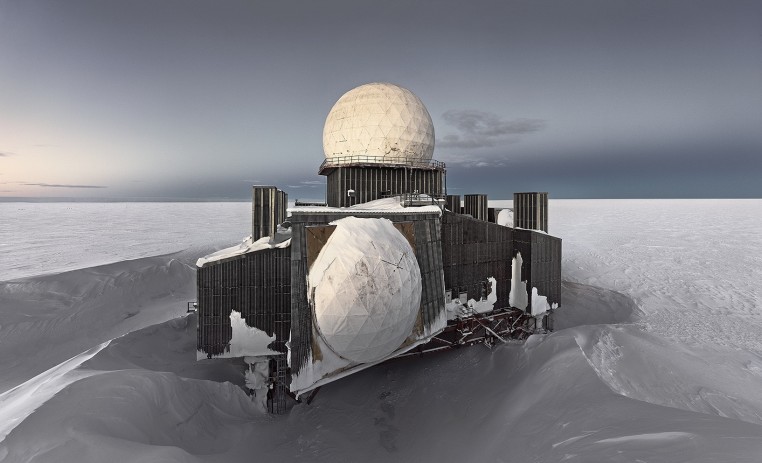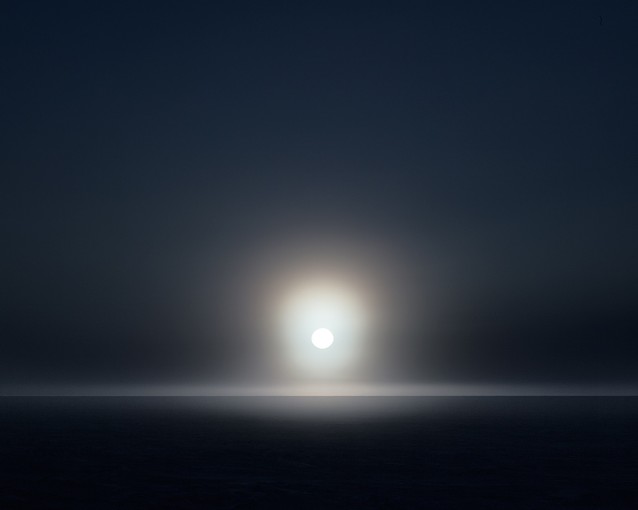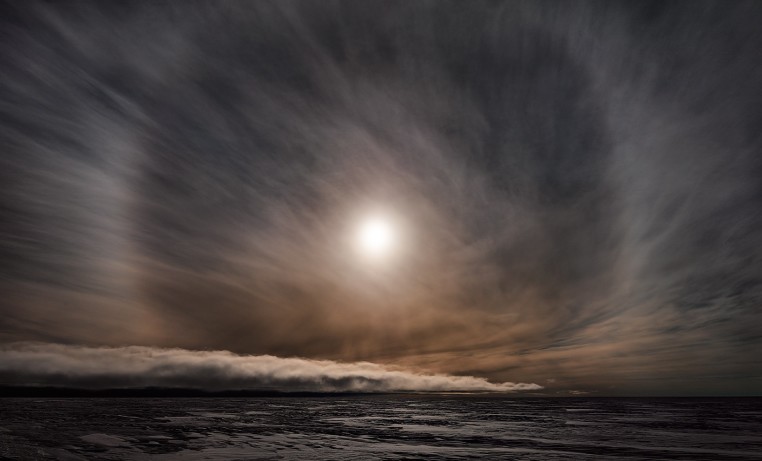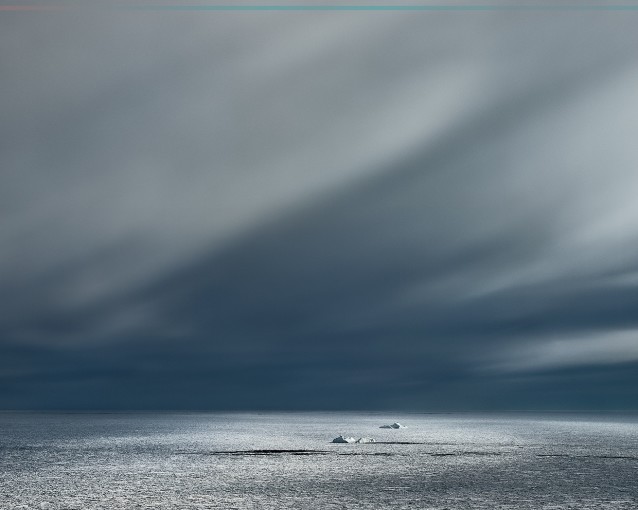Fredericks, known for his large body of work, Salt which commenced in 2003, capturing the vast and brittle Lake Eyre in South Australia - began tackling the landscape antithesis of Australia’s arid heart, the Greenland Ice Sheet. Between 2010 - 2013, he visited Greenland six times in a continued quest to explore the subjects of ‘space’ and the ‘void’. Aiming to convey ‘an emotional experience of space’, he describes an inner, rather than outer landscape and seeks to describe the identity people are driven to create when confronted by empty space.
“The rationale was to locate the project in an even more minimal landscape than Lake Eyre, replacing the salt lake bed with snow and the clear desert air with an atmosphere of fine ice crystals.” – Murray Fredricks
In these epic, often arresting images, Fredericks captures Greenland’s, snow-covered surface, its light and colour effects at different times of day and in various climatic conditions, and its surrounding expanses of frozen land; all this to reflect the experience of living and shooting alone in a sublime, remote environment.













